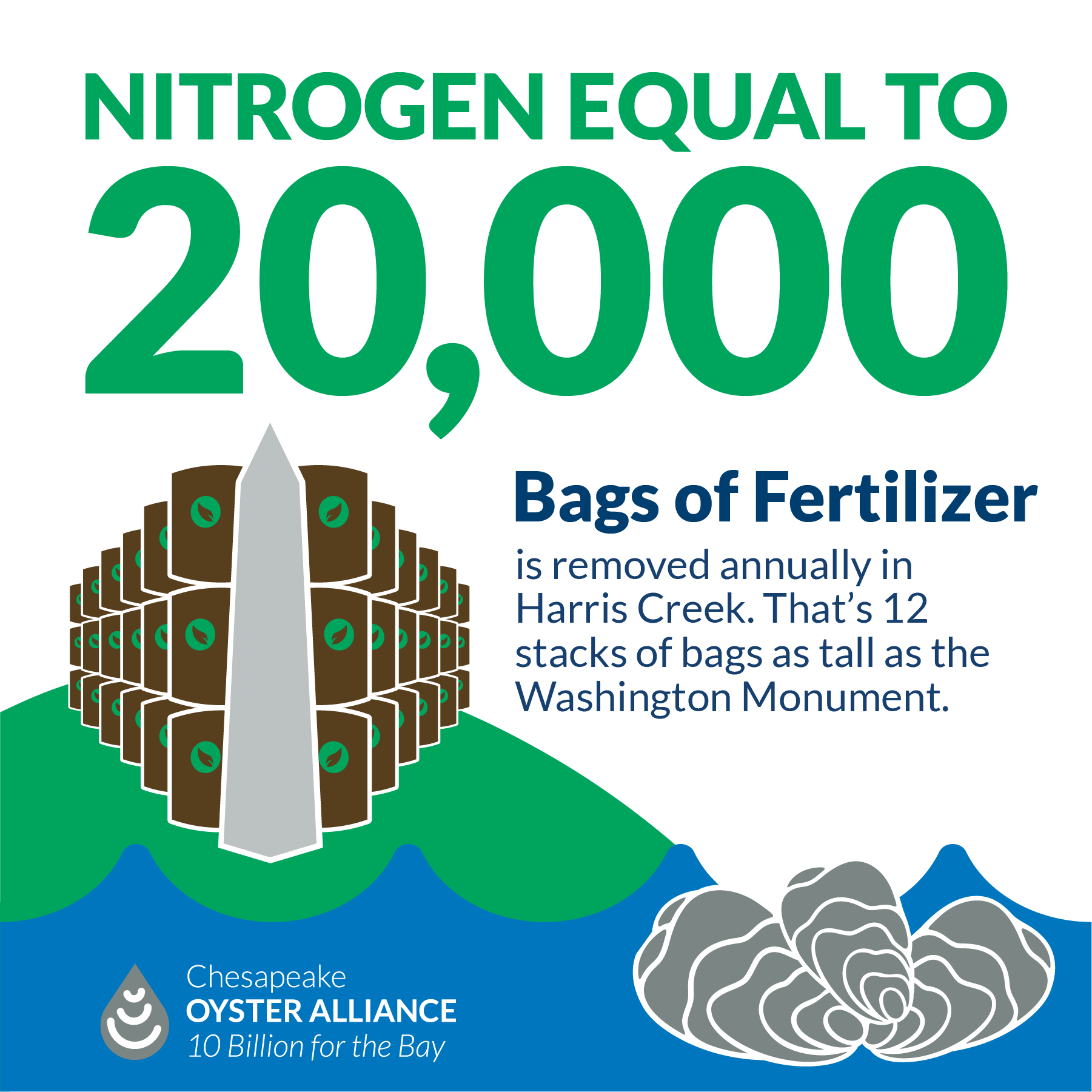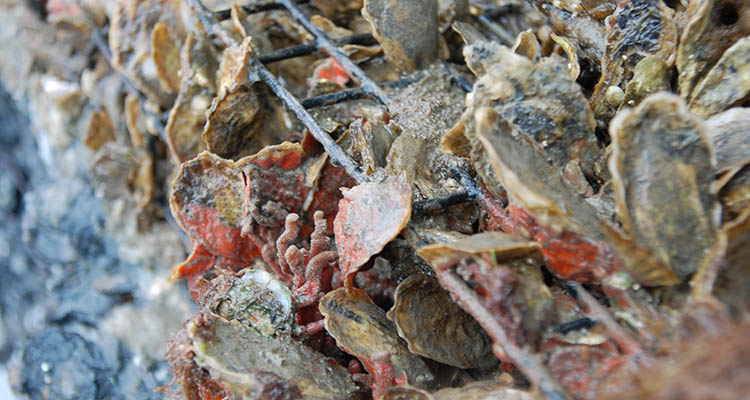Oysters: Food, Filters, Fish Habitat
- For more than 100 years, Chesapeake Bay watermen have made their living harvesting oysters for resale to restaurants and seafood wholesale companies.
- Until the mid-1980s, oystering was the most valuable commercial fishery in the Bay. After the oyster stocks crashed, crabbing became the most lucrative fishery. Today, even crab stocks are declining.
- Oysters also have tremendous ecological value, which may be the most important benefit they provide.
Watch this time-lapse video of oysters' powerful filtering ability.
Filters
- Oysters purify the Chesapeake Bay as they filter the water for their food. An adult oyster can filter as much as 50 gallons of water a day.
- Sediment and nitrogen cause problems in Bay waters. Oysters filter these pollutants either by consuming them or shaping them into small packets, which are deposited on the bottom where they are not harmful.
- The oysters in the Bay could once filter a volume of water equal to that of the entire Bay (about 19 trillion gallons) in a week. Today, it would take the remaining Bay oysters more than a year.
- Oysters are making a comeback thanks to restoration efforts. Restored oyster reefs in Harris Creek, on Maryland’s Eastern Shore, can now filter the entire volume of the creek in less than 10 days during the summer. Each year, the reefs are estimated to remove an amount of nitrogen equivalent to 20,000 bags of fertilizer—a service valued at more than $1.7 million.

Fish Habitat
- Anyone who fishes the Bay knows that oyster reefs are among the best places to fish because they are teeming with life that attract large predator fish, such as striped bass and sea trout.
- The hard surfaces of oyster shells and the nooks between the shells provide places where small marine animals live. The packets of sediment that oysters deposit on the bottom provide food.
- Hundreds of animals use oyster bars: grass shrimp, amphipods, bryozoans, anemones, barnacles, oyster drills, hooked mussels, mud crabs, and red beard sponge, to name a few. Many of these serve as food for larger animals including striped bass, weakfish, black drum, croakers, and blue crabs.
- When oyster reef restoration is complete in the Choptank River, researchers estimate the mature reefs will increase total commercial fish and shellfish harvests by 80 percent compared to pre-restoration conditions.

Fading Away?
- During the twentieth century, oysters were the most harvested animals in the Bay. This harvest pressure, combined with loss of reef habitat, pollution, and disease, have resulted in their decline.
- Bay oysters used to grow in tall reefs that were much better for the Bay than today's flat oyster beds. The reefs were elevated, which kept oysters above the silty bottom and exposed them to food-rich currents above. The healthy oyster reefs of 100 years ago were so large that they were considered navigational hazards.
- Reefs provided far more nooks and crannies for creatures to hide in than today's flatter beds.
- Restoring three-dimensional reefs can also help stabilize shorelines and prevent erosion. In some places, reefs can be used as a replacement for man-made bulkheads and rock retaining walls, providing an estimated annual value of $35,000 per acre of reef.
- Researchers also found investments in oyster reef restoration provide a higher rate of job creation than investments in other industries, including road construction, solar, oil and gas, nuclear energy, and coal.
Profile of Oyster Reefs in the Bay

